Welcome to this ongoing project space where Esmond Lee explores Toronto’s dynamic space between urban and rural most often referred to as suburbs. .
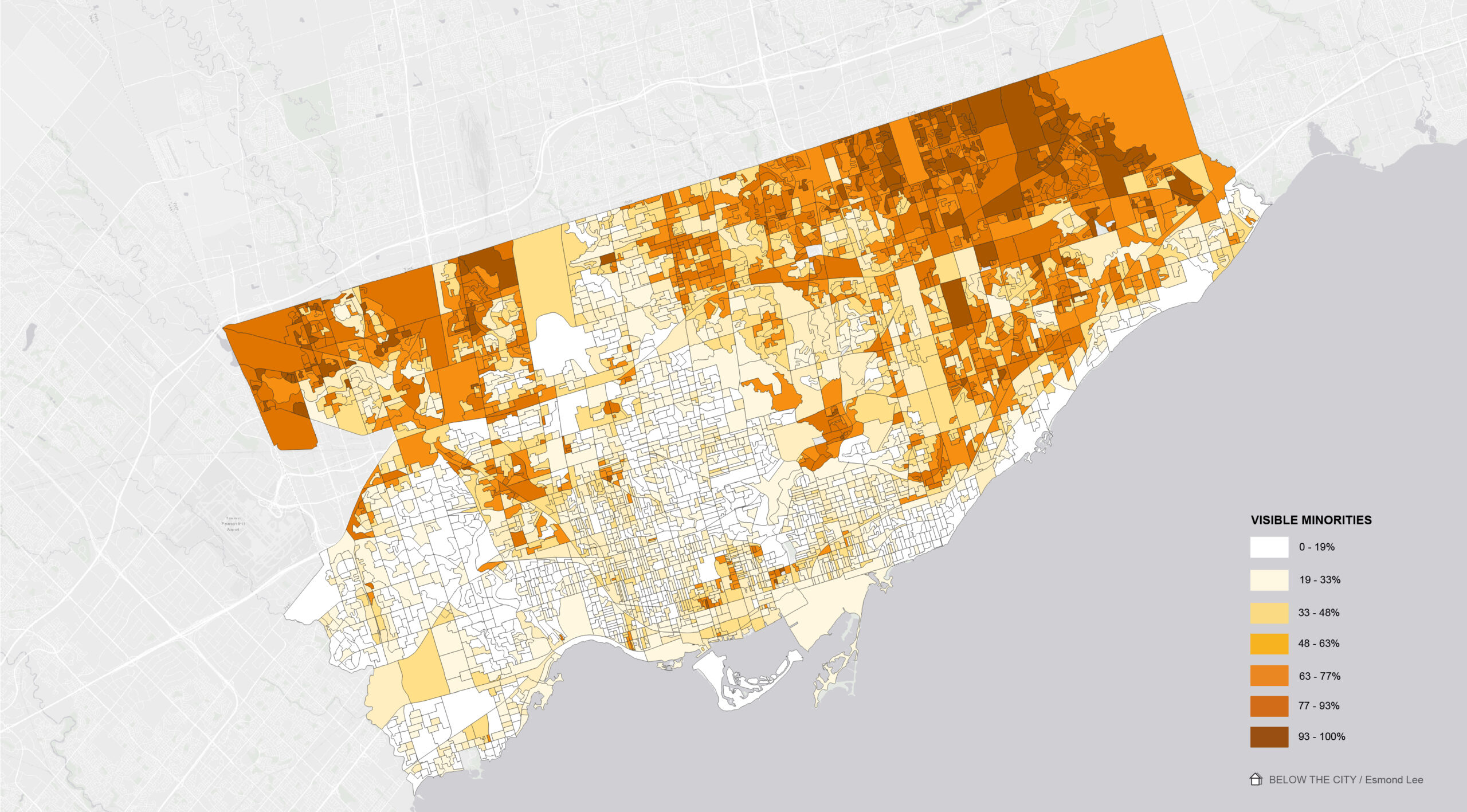
The City of Toronto proudly celebrates itself as the most diverse city in the world, with visible minorities making up 51% of its population. Traditional ethnic enclaves with distinct borders such as Chinatown, and Little Italy from early waves of immigration are found within the inner city. However, recent waves of immigration has formed even larger ethnic communities in the suburbs. Approximately 64% of Toronto’s peripheral population identify as visible minorities, reaching 96% in Scarborough North and 88% in Etobicoke North at the far corners of the city.
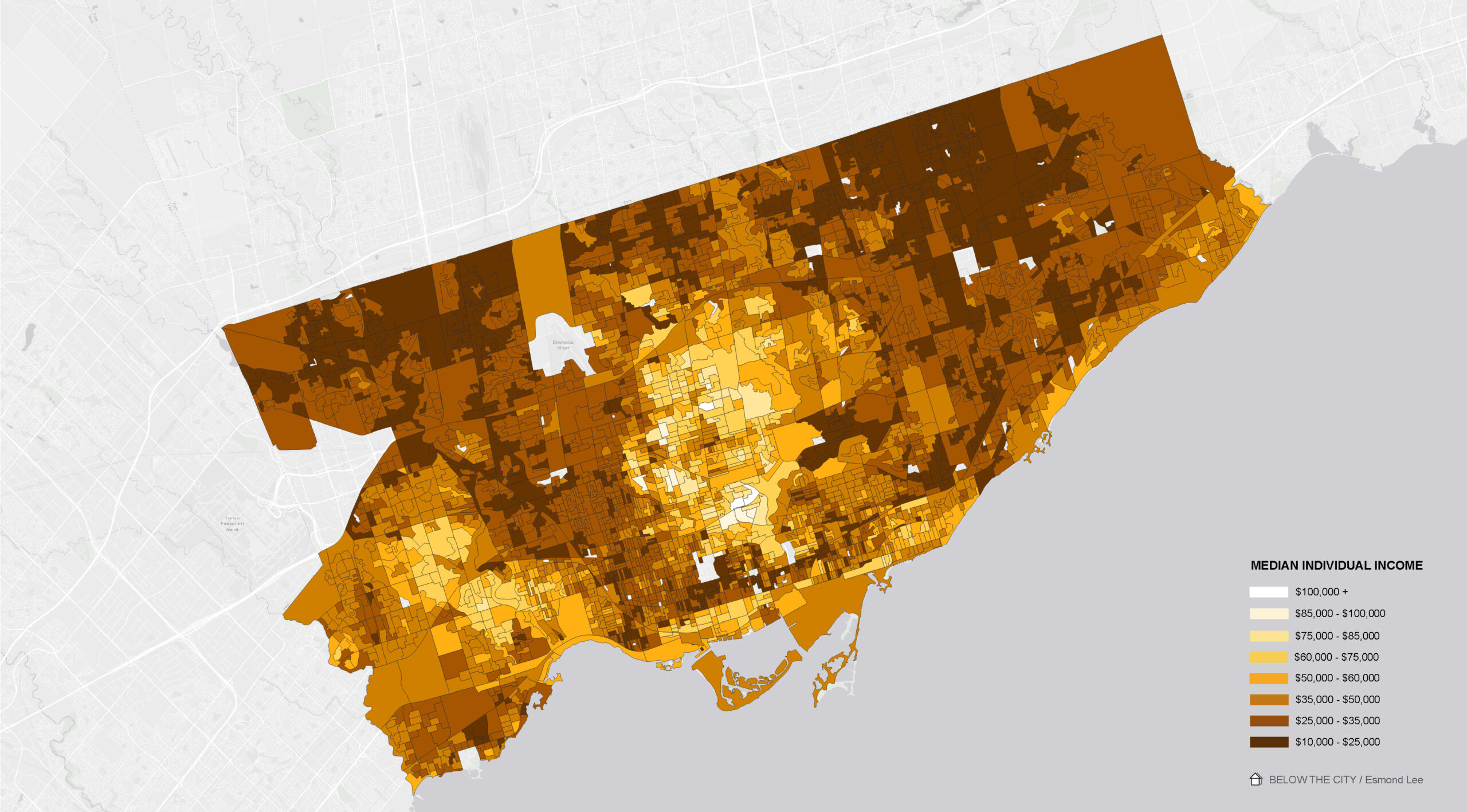
The periphery is also home to lower income groups. Pockets of lower income in downtown include traditional ethnic enclaves and student living areas around campuses associated with student housing.
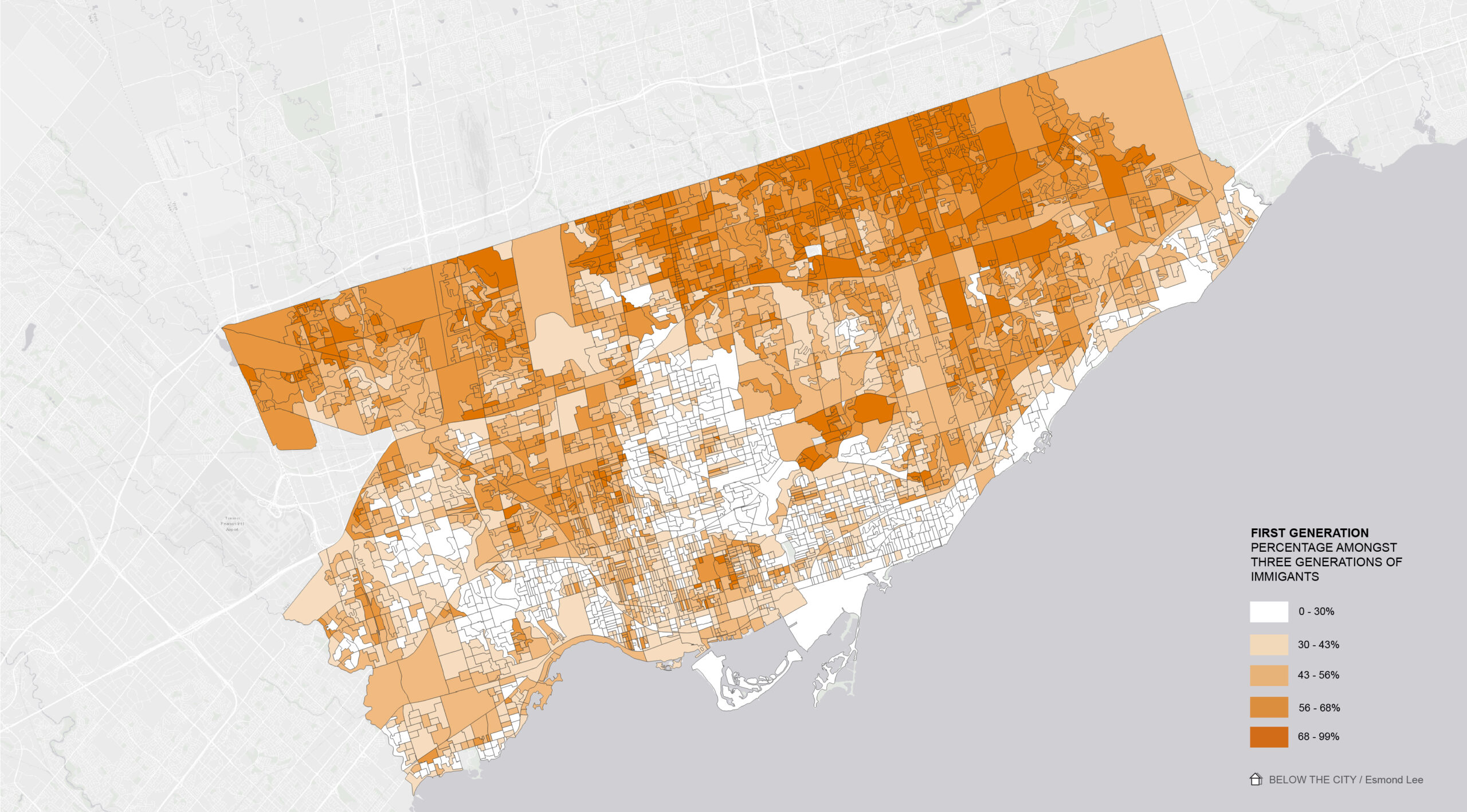
Amongst all generation of immigrants, a higher percentage of first generation live in the urban periphery and historical ethnic enclaves. This geographical distribution is similar with the median individual income and visible minority map. Areas of first generation also exist around in student living around campuses.
Second generation, defined as being born in Canada and having at least one parent born outside Canada, is well mixed throughout Toronto. Second generation never account for more than 55% of immigrants in any given area.
Third generation onward, with both parents both in Canada, are well concentrated in the city center, downtown, and along prime waterfront areas.
*Immigrant is defined foreign-born and include those from European countries.
Each map data is categorizes via natural breaks (Jenks Optimization).


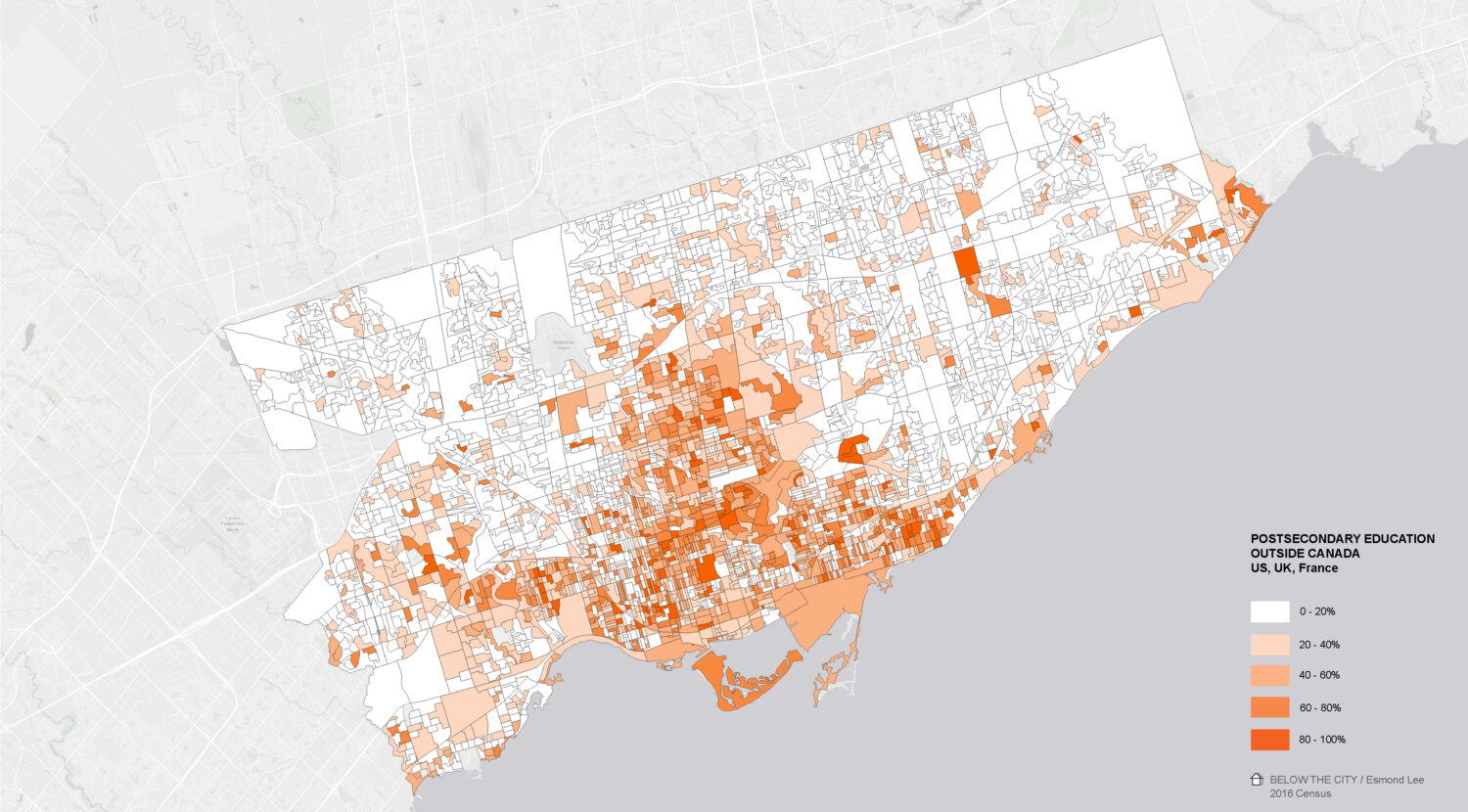
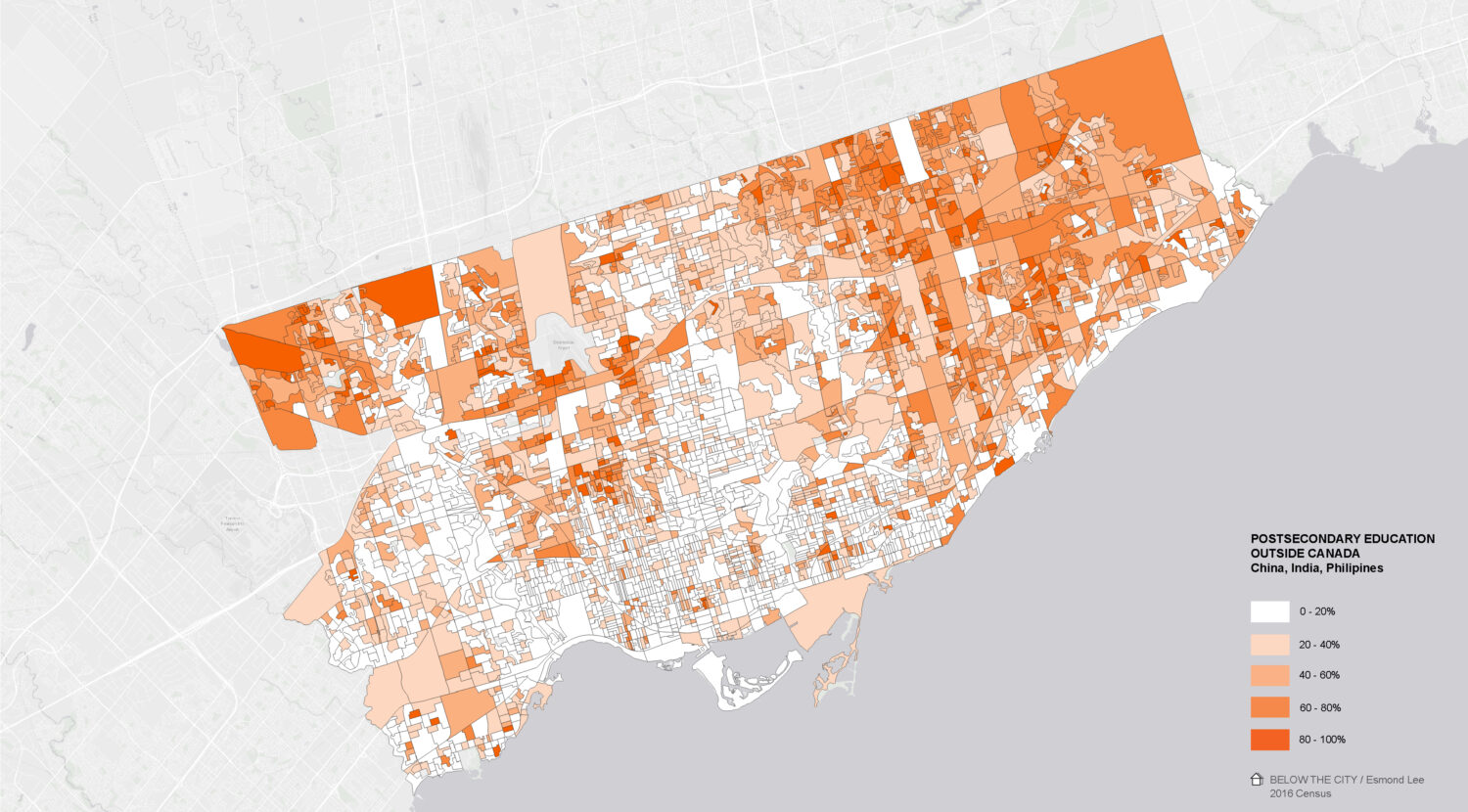
Those with post-secondary education outside Canada, who’s credentials are from racialized countries such as China, India, and Philippines, are over represented in the urban periphery. On the other hand, those with post-secondary education outside Canada but from Anglo Saxon nations such as US, UK, or France are overly represented in the city centre, where mainstream amenities and society reside.
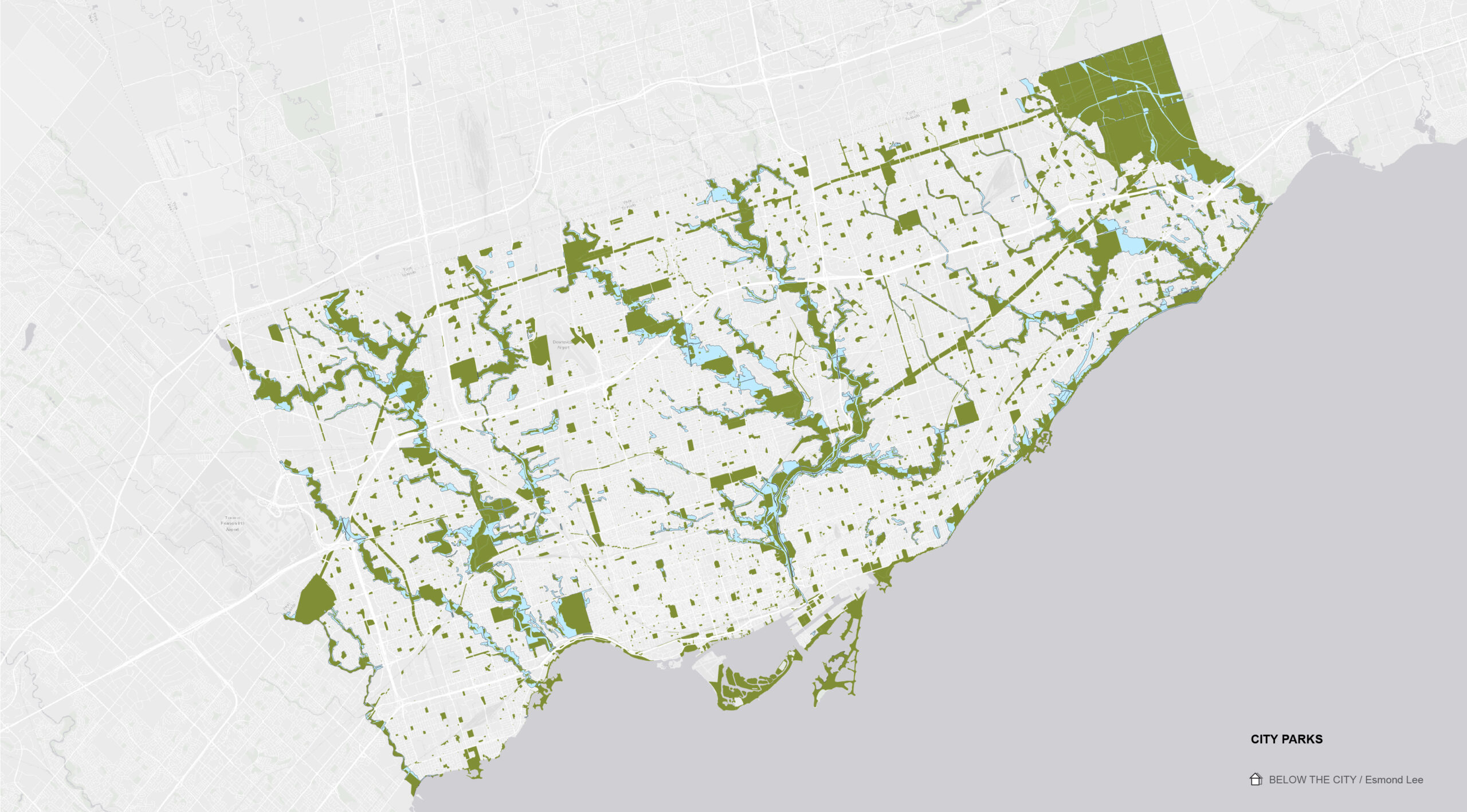
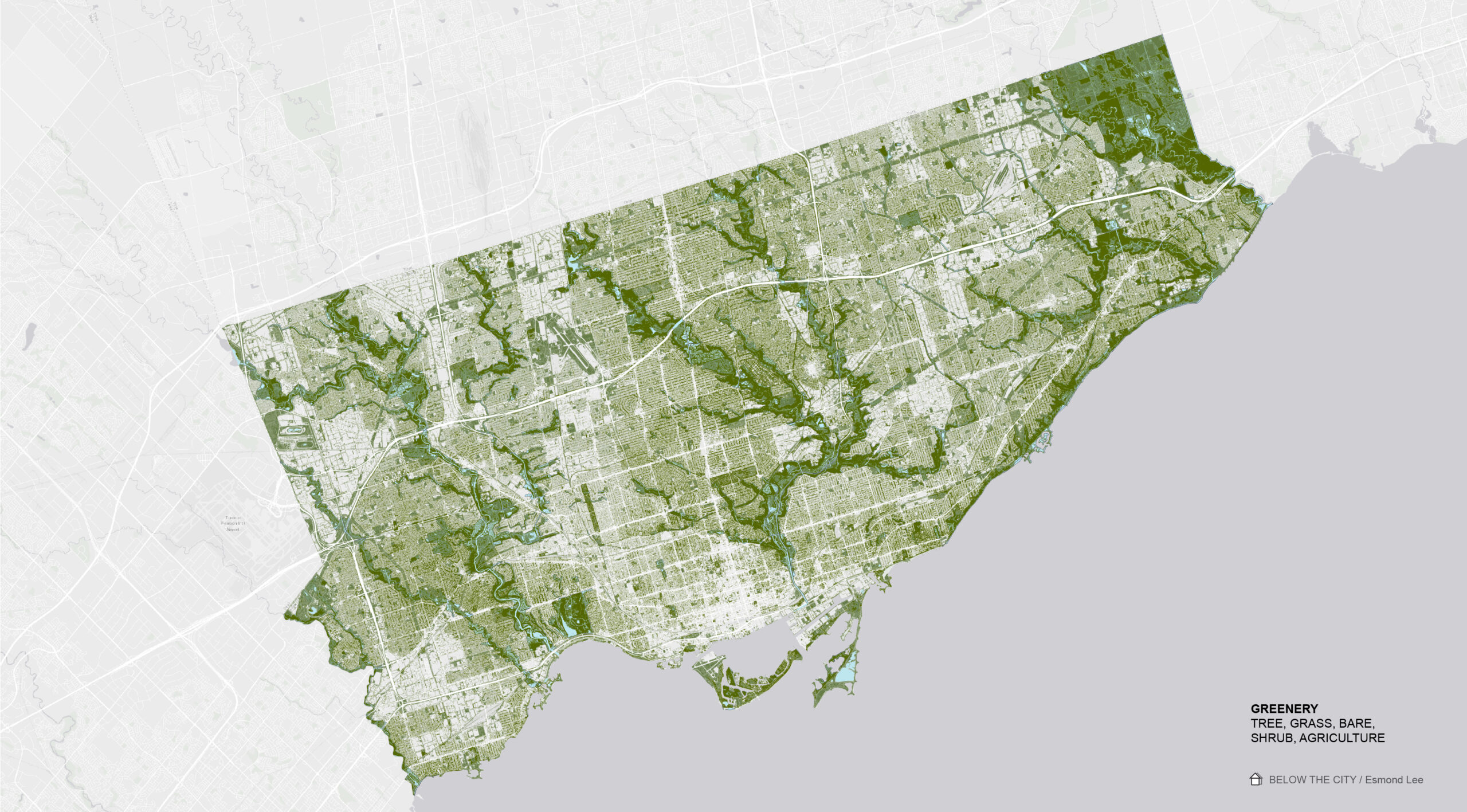
Toronto is abundant in natural land cover and tree canopies. This is especially the case outside the downtown core. Though city parks play an important role, all the informal greenery interwoven throughout the suburban landscape contribute significantly to our daily experience and well-being.